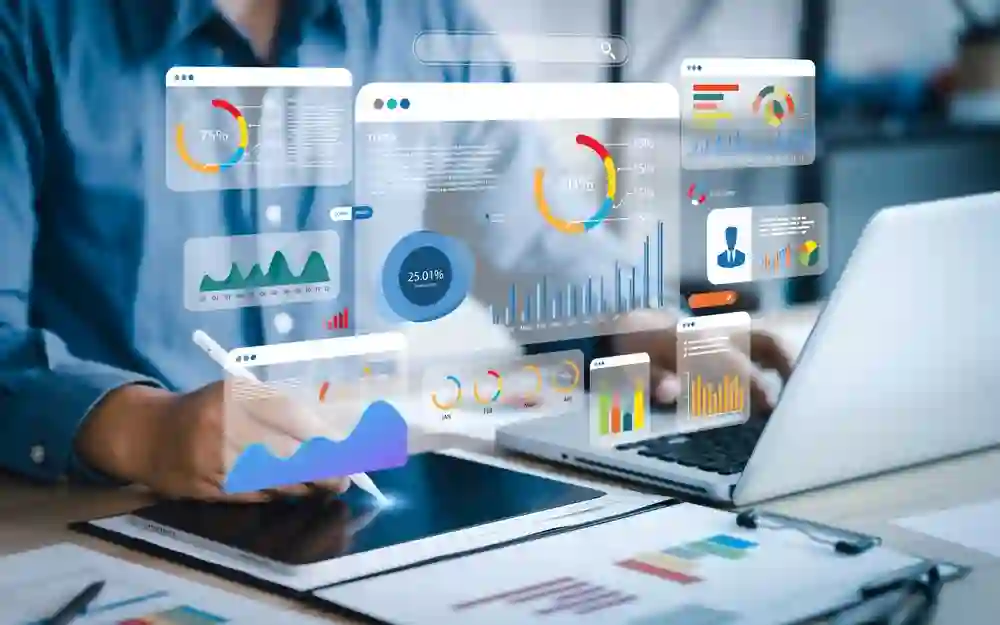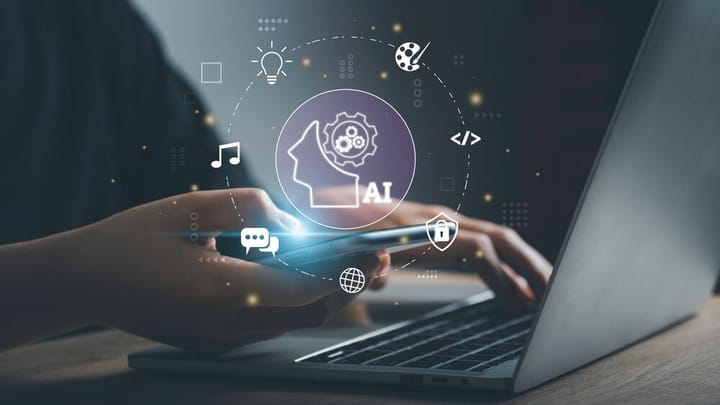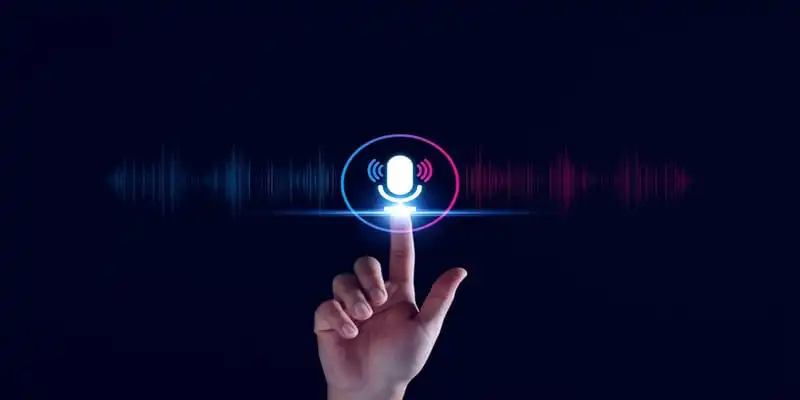AI Art Generator: A Tool to Enhance Human Creativity
An AI art generator elevates human creativity by driving their creative boundaries and rendering prompt concepts to create a stunning AI-generated image, illustration, painting etc. Just describe your thoughts in text or image prompts and watch an AI image generator bring them to life.
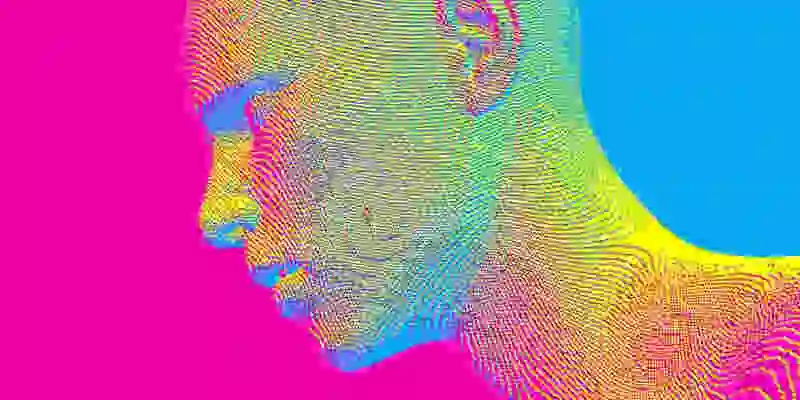
For ages, people have been considering creativity an inherent human characteristic. Today, AI has achieved the status where it is dramatically reshaping old thoughts. With every passing day, AI surprises everyone worldwide by doing things beyond their imagination. AI art is one of those emerging fields where AI neural networks used in an AI art generator reveal a new epoch of creativity, and data serves as the basic pigment to create this art.
An AI image generator offers endless possibilities, and the resulting AI art is the combined effort of an AI system and the artist. Many AI image generators are easily and freely accessible to people, supporting them to transform their idea into artwork. Using AI art tool is a stunning adventure as it always comes up with elements of surprise and unpredictability to create unique artwork. In a recent Art competition, the AI art of "Theatre D'opera Spatial," created by a well-recognized AI image generator named Midjourney, won the 1st prize based on the spirit it invoked. However, the artist community is confused about the outcome of AI art, whether it could sabotage and finally displace them or rather continue to enhance their creativity and productivity. This blog explores everything from the context of AI art generator to how it works and if they can enhance human creativity or replace artists.
What is AI Generated Art?
AI Art is artwork created by ML process, which means that a machine is trained on some information that it later uses to generate a new image. It is a domain of computer science that mainly focuses on developing machines that emulate human intelligence via algorithms. AI-generated art is an AI art generator output that uses AI algorithms trained on a set of parameters. Humans input the datasets or written instructions, but the art generation process is left to the machine.
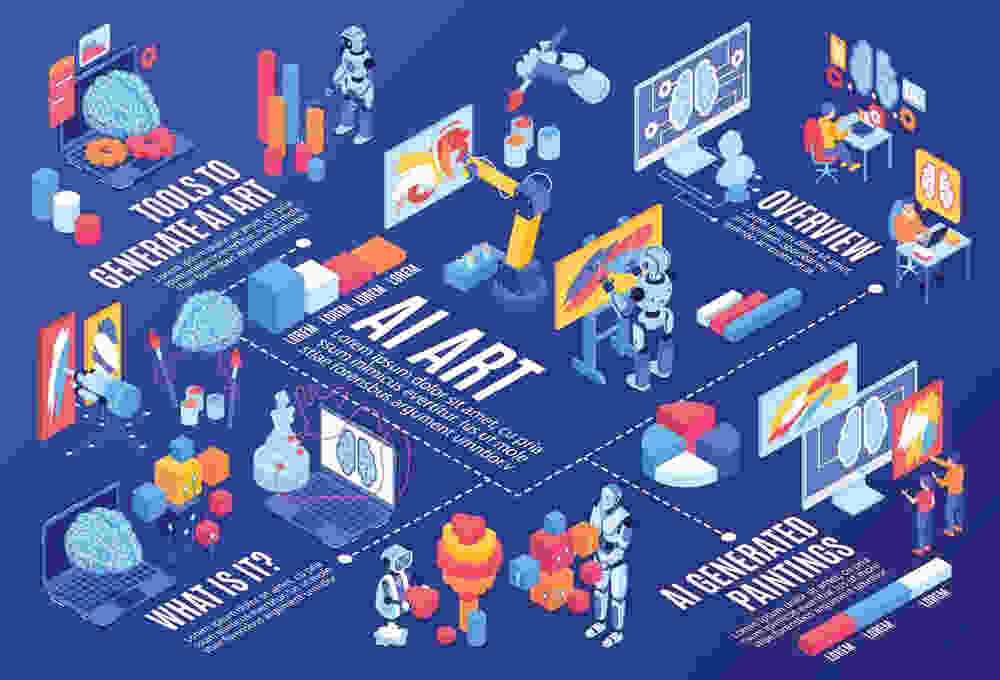
What is an AI Art Generator? How Does it Work?
An AI art generator is a tool that leverages artificial intelligence to turn your imagination into lifelike graphics. It produces thought-provoking and stunning art pieces from your text or image prompts.
The model of an AI image generator is trained on up to millions of images. It looks at the images just like an infant and learns the concept behind them. For instance, if you feed the algorithm of an AI art maker with the dataset of Yoga photos. It will analyze and conclude that the yoga practice includes different poses. It will also remember the objects used for yoga practice, like yoga mats, cork blocks etc. Then if it has been trained on several elephant images, it will understand an elephant as a thick and heavy animal with a long trunk and two long outer teeth. Suppose you command it to generate an image of an elephant practicing yoga. In that case, it will easily create amazing AI art, regardless of whether such an image has existed.
AI has been brilliant at identifying patterns to produce results that a human brain might find difficult to discover. The most common AI art generators involve image processing and recognizing features, including texture, color and text. Based on this, an AI art model either edit an uploaded image or generates a new one from your text input.
An AI Art generator typically works on any of the following models:
1. GAN (General Adversarial Network)
GAN is a Deep Learning process involving two sub-models that work collaboratively:
- The Generator: It generates new images with the main focus on creating a unique image based on the given prompt.
- The Discriminator: It has a database of several images and serves as a Classifier. It checks if the AI generated image is truly unique.
VQGAN+CLIP system is the evolution of GANs that has recently gained popularity. It generates unique artwork from natural language prompts. This neural network model is used in text-to-image generators and creates artwork of different sizes. You enter a descriptive text and leave the rest to the AI art generator that generates the most relevant image. DALL E-2 and Imagen are famous AI art tools with the same principle.
2. CNN (Convolutional Neural Networks)
CNN is another approach followed by some AI image generators like Google’s DeepDream. This AI tool works similarly to your brain in the dark. It sees patterns in the shadows and enhances their appearance, generating psychedelic images. This neural network architecture is mainly used in an AI image generator that works on image prompts.
3. Diffusion Model
Some more advanced AI art generators like Stable Diffusion leverage the Diffusion Model. This model generates pictures from image noise. This approach is far better, more accurate, and more coherent. The diffusion model works by getting trained on many images and learning to create an image by looking at all existing images. The computational cost of this AI art model is less, meaning it needs little training time and uses less energy than other models.
How to Make AI Generated Art?
Any of the following ways can create an AI generated image:
- Using AI Art Generator from Text: Go to the website of the AI art tool you are using, sign up for your account if you don't have it already, type in a descriptive text in the prompt section, and select the style, colors, and paintbrushes you want, and let the AI art generator to spit out an amazing artwork from your text. That’s all! Your text prompt must include a comprehensive description to get better results. Keep tweaking your words or phrases to get an AI-generated image closer to your thoughts.
- Using AI Art Generator from Image: In the prompt section, feed an image as input that resembles what you have in your mind. The AI image generator will create a stunning art piece that is the nearest match to your input image.
What AI Art is Everyone Using?
An AI art generator is a fast-growing medium. As discussed above, a wide range of AI image generator is built on various AI models. These tools make AI art approachable to anyone with a smartphone and an active internet connection. Most AI art generators are free to start; however, all are not easily accessible.

Let’s have a look at some common text-to-image generators that are accessible to anyone.
1. Dall E-2
Dall E-2, with more than 1M users, is an AI art generator now available for everyone. It is trained on 650 million images and their descriptive captions, empowering it to outrival other AI art tools to generate photorealistic images and photographs.
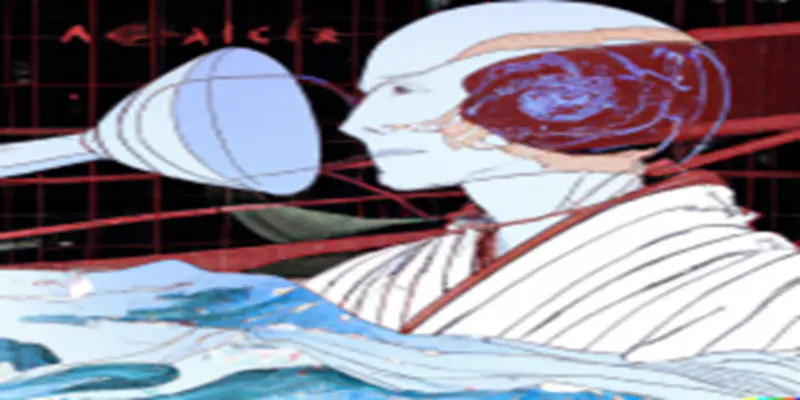
Text Prompt: “Hokusai painting of AI.”
2. Midjourney
Midjourney is a famous AI image generator easily accessible via a discord account. It is one of the best text-to-image generators that work in a more abstract and artistic style and is most popular for making sci-fi- horror- and fantasy-themed images. It is a Dall-E rival that offers its users a free trial.
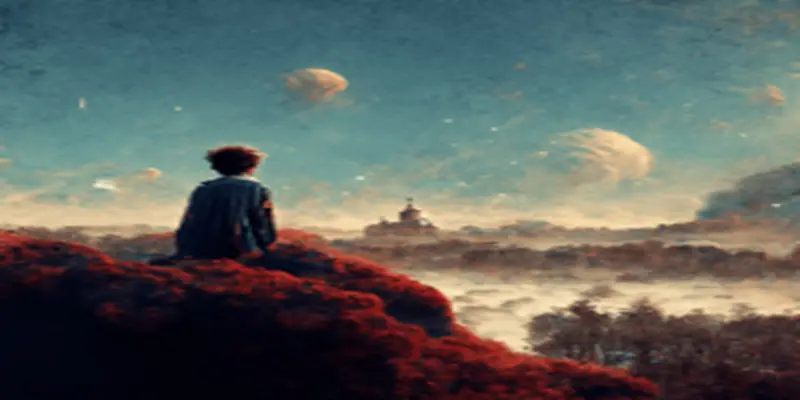
Text Prompt: “Boy on top of a hill looking at the sky and seeing the destruction of planets.”
3. Stable Diffusion – the most accessible tool for anyone
Stable Diffusion, released in August 2022, is a free AI art generator from the text. Stability AI – the startup behind Stable Diffusion has targeted an investment of $1 billion on this text-to-image generator. This AI art generator is free to use and is much more reachable than other tools. Stable Diffusion allows open-source and unfiltered art creation. It offers a public demo for anyone to check and practice it and a full-fat version that is easy to download and use. Stable Diffusion also offers a software beta named DreamStudio – an online tool that allows you to leverage the AI model at a reduced price. This open-source AI image generator is an alternative to Midjourney that has raised in popularity among designers and artists in a very short period.
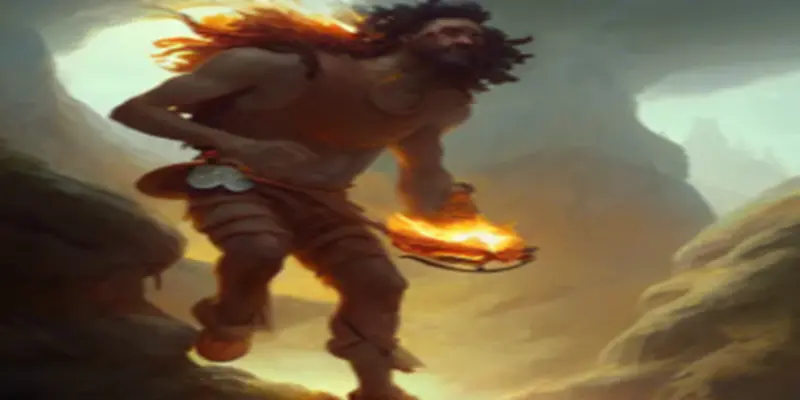
Text Prompt: fantasy portrait of a hero stealing fire from gods.”
Some other AI art generators that anyone can use right now include:
1. Craiyon (DALL-E Mini)
A free AI art generator from text and image prompts. It is an open-source version of Dall E2 that is free for users. You even don’t need to register yourself for account creation. It is best recognized for creating memes. It generates 9 images against a text prompt in a 3x3 grid.
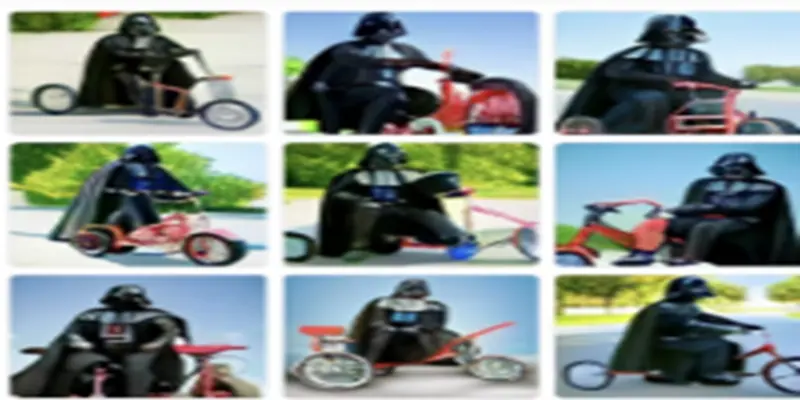
Text Prompt: “Darth Vader riding a tricycle outside on a sunny day.”
2. Wombo Dream
It is another free AI art generator famous for generating stunning AI art from text and images. It allows you to mint your AI generated image into NFT and share it on social media. Wombo Dream also converts your photo into a cartoon. It offers more features in the mobile app rather than the web app.
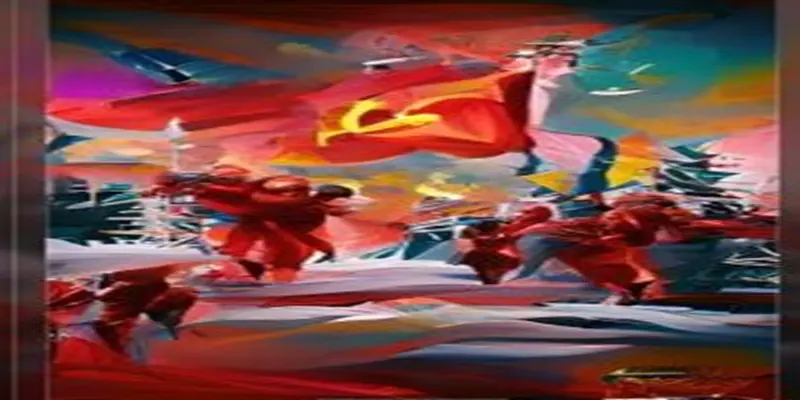
Text Prompt: “Ussr Invades USA.”
3. Starry AI
It is a rudimentary AI art generator from text that creates AI images with more granular control. It allows you to use your AI generated art for NFT projects. You can even take its print or share it on social media. Free users are allowed daily to create 5 AI-generated images without watermarks.
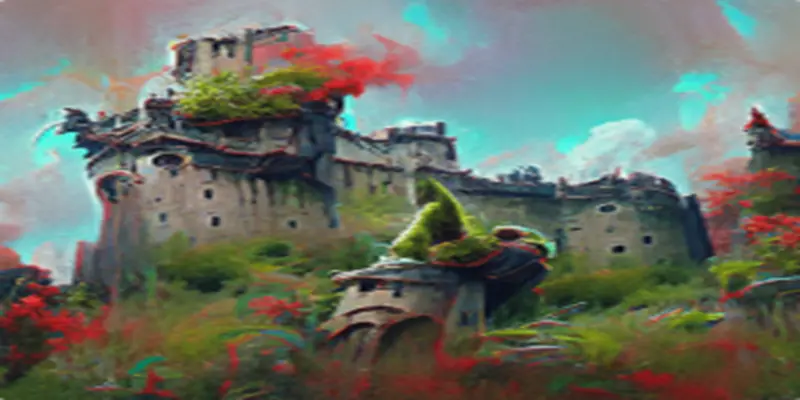
Text Prompt: “an overgrown castle.”

AI Art Generators by Tech Giants
The potential of AI art technology has not gone unnoticed, and various well-established startups are investing heavily to develop AI models for AI Art generation.
Many big tech companies have revealed their interest in creating their own versions to create AI art; however, most models are not publicly available. Here is a short list of AI art generators owned by tech giants:
- Imagen and Parti - a text-to-image generator by Google that outperforms Dall-E.
- Make-A-Scene - an AI art maker by Meta that needs a sketch upload to guide AI.
- NUWA-Infinity –an AI art generator by Microsoft that comes with a noteworthy feature of transforming a still image into a video.
Can you Sell AI Generated Art?
AI art generator is shaking up the art world, and people wonder if they could earn money from their AI generated image. "Yes” is the obvious answer to make their thoughts clear. AI art helps you earn money as art AI generators create artwork in digital form that is easy to sell as NFT. However, you must possess copyright permission for your AI generated art. Recently, the 1st US copyright registration was received by a graphic artist named Kris Kashtanova for his AI art that sets the pathway to sell it.
Here are a few of the most familiar ways to sell your AI generated art.
- Sell your AI generated art on stock Image websites: Upload your AI art on websites like iStock photo and Adobe Stock and fix a price for every download. You will get a commission when someone likes your artwork and purchases it.
- Sell your AI art on print-on-demand websites: Upload your AI-generated image on websites such as Printify and TeeSpring and sell it as prints, wall art, phone cases, etc. When a customer orders your AI art, the website will take its print and ship it while paying you a commission for each sale.
- Create an online store to present and sell your AI-generated art: It is better to create your online store to keep your AI art prices in your control. You can use the services of Shopify, WordPress or Wix and sell your AI generated art as physical prints or digital downloads.
- Sell your AI artwork as a Service: Present your services as an AI image creator on Fiverr or Upwork. If someone buys your services and places an order to create an AI image for him, generate it, sell it to them and earn money.
- Sell your AI generated art as NFTs: Produce an image using AI art generator and sell it as NFT art on marketplaces such as OpenSea and SuperRare.
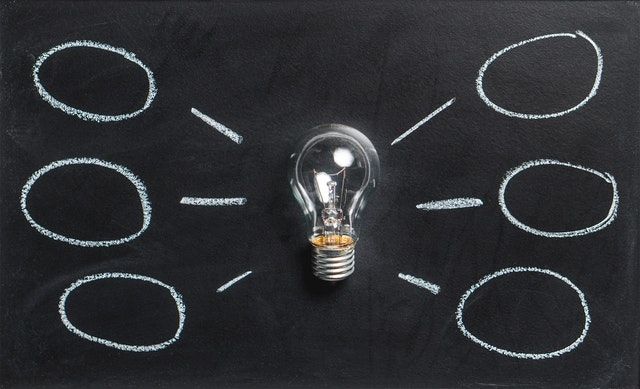
AI Art Generator is Enhancing Human Creativity
AI Art has become increasingly popular in recent years, leaving experts in doubt if machines or humans have really created them. The AI generated art created hype worldwide when the first AI painting by Obvious, “Edmond de Belamy," was auctioned at Christie's worth $432,000 in 2018. The sale of this AI-generated image inspired many artists and non-artists to use an AI art generator and produce explorative artwork.
An AI Art generator is generally trained on a staggering 5.85 billion image dataset. Training AI model on this gigantic data enables AI to learn about artistic concepts and image content. Trained on these huge datasets, AI art is the outcome of a machine that is no less than a creative artist. Therefore, many experts believe that an AI art generator will replace humans in creative jobs just like robots are displacing human labor in factories.
According to Matthew Stone – a British artist who used an AI art generator, i.e., "Dall E-2," to create his virtual artworks for his recently held exhibition.
"AI-generated art is a major disruptive force, and there will be both democratic and oppressive aspects to it.”
Stone experimented to confirm if an AI image generator could really be a 100% replacement for human artists. He used his own artwork as an image prompt and asked the tool to generate AI art. He concluded that artificial intelligence is not yet too good to create such an art he would love to share without spending a lot of time to improve it.
According to Noah Bradley, who posts videos on YouTube to guide about using AI tools, the impact of an AI art generator will be similar to that of smartphones on photography that has improved the accessibility of visual creativity rather than replacing professionals.
An AI image generatorswarms millions of images every day and is very helpful for those who are not artistically gifted but love to take part in the creation of something stunning. Even a professional artist can use AI art tools to supplement areas where they feel weak, such as backgrounds, composition etc. In short, AI art generator does not displace human artists but elevates human creativity. Benjamin Von Wong, a photographer well-recognized for hyper-realistic images, admits that AI art has enhanced his productivity. He claims:
“DALL-E is a wonderful tool for someone like me who cannot draw and uses the tool to explore ideas that could later be built into physical works of art. Rather than needing to sketch out concepts, I can simply generate them through different prompt phrases.”
An AI art creator is also helpful for those who want to create art for their projects but can't afford a concept artist. Suppose you own a made-up company to deliver fruits and want to create a company logo. Without hiring a graphic designer or using an AI image generator, there is no way to produce this logo remotely. The latter would definitely be a better choice, where you can bring your creative idea into action at a much-reduced cost. Hence, AI creativity can inspire and elevate the creations of human artists either in alliance or behind the scenes. An AI art generator is undoubtedly transforming art, but human skills are required to use this model. So, it would be better to state that an AI image generator is a co-creator that assists human artists in generating a masterpiece by enhancing their creativity.
Limitations of an AI Image Generator
AI art technology is advancing rapidly. Around six months ago, most AI art generators struggled to create the human face. We could see outrageous combinations of wandering limbs, eyes, and teeth. But today, you will find a more photorealistic version of any character. Though we have seen extended improvements in AI Art tools in the past five years, some still struggle with many things.
- Sometimes the words in AI-generated art are gibberish, though recognizable.
- AI art generator still has difficulties in creating a human hand.
- AI art models can just produce digital art; they can't generate artwork with pastels or oils. However, Diego Peralta, a computer graphic artist, has recently discovered the solution to this limitation. He tried to create AI-generated art by asking the AI tool to create portraits in an oil painting style. Then he used this AI generated image as a sketch and painted them with real oils on canvas, using the image as a sketch.
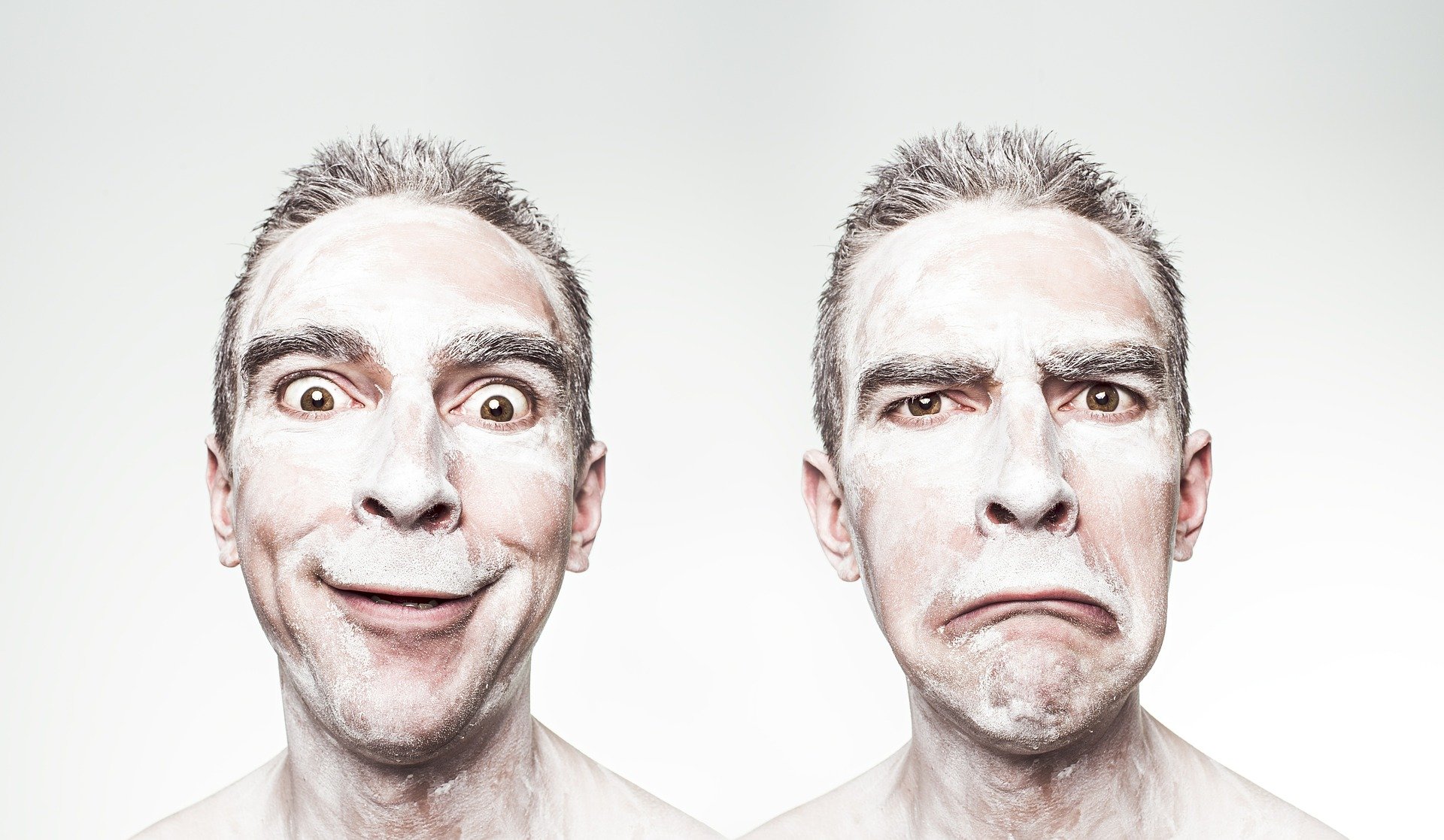
Above are a few constraints confirming that an AI art generator is not the digital replacement for creative humans. However, it offers much support to improve human creativity. For instance, an AI image generator can generate multiple images to initiate a project. Still, it would later require a human artist to select from the range and improvement. It means an artistic masterpiece would result from the combined strengths of human artists and AI art models.
Wrap-Up
Undoubtedly, AI does most of the legwork for us, and AI art generated by combining various styles and elements might beat human art; it still depends on human input. It needs an imaginary thought by humans to convert it into the form of AI Art. Whether you are an illustrator, photographer, or doing anything creative, an AI art generator is there to enhance your creativity. AI has the potential to perform multiple tasks, and artists are using it as a tool to drive their creative boundaries. An AI image generator is a co-creator of artists, stimulating their creative thinking and artistic style. Artists can use it to fill gaps in their artworks, get prompt concepts and tear their ideas. To put it simply, in the AI art world, humans are the Creative Directors, and the AI art generator serves to accomplish the artist's vision beyond their expectations.

